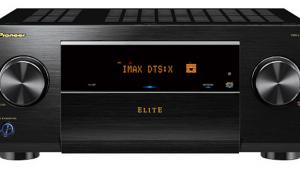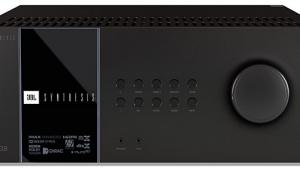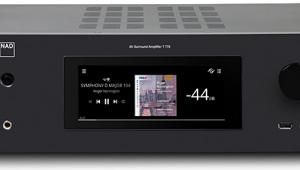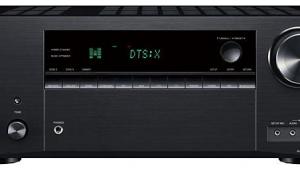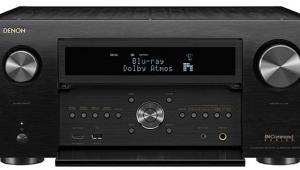Yamaha RX-V685 AV Receiver Review High Wireless
Late during my RX-V685 review, Yamaha sent along a pair of its newest MusicCast wireless speaker model, the MusicCast 20 ($230 each), for trial-by-wirelessness in the surround (rear) positions. (This ovi-cylindrical two-way design, about the size and shape of a family-sized carton of Quaker’s finest, also proved to be a very fair-sounding little speaker, especially when configured as a stereo pair.)

Setting these up as surrounds in thrall to the V685 proved initially puzzling, but ultimately very straightforward. I first had to find the instructions to do so online—no mention of wireless-surround use whatsoever appears in the receiver’s own manual, despite the feature being trumpeted on Yamaha’s product web page. These instructions, however, proved to be very curt: essentially, follow the on-screen prompts of the MusicCast app on your smartphone or tablet. This proved perfectly accurate, except that you must first register both wireless speakers into your receiver’s MusicCast “location,” a process that requires considerable screen-pressing, swiping, and switching of Wi-Fi networks to and from a temporary one that each MusicCast device throws up for the setup process. (Such byzantine setup steps are common among wireless audio systems, however, and not peculiar to MusicCast.)
In retrospect, this was perfectly logical, but it stymied me for a bit since the “MusicCast Stereo/Surround” menu option cited in the one-paragraph instructions stubbornly refused to appear on my app until both speakers were registered. I know, I know: duh. Frankly, as an old-school guy I’d be every bit as comfortable stringing a quick pair of speaker wires, especially since each MusicCast 20 must of course still be provided with 120-volt wall power via a—gasp!—power cable, making the “wireless” surround claim strictly relative.
With all this accomplished, and the speakers plunked on my high sidewall shelves in place of my everyday dipoles, the MusicCast pair dutifully functioned as surrounds with performance pretty much equal to that of any good-quality, sub-compact two-way wired speakers. Actually, their rather wider and somewhat more diffuse spatial imaging, typical of such one-piece powered designs, made them particularly well suited for surround duty, presenting a nicely broad spread of ambience. For one example, a scene from the shockingly wooden Kenneth Branagh version of “Murder on the Orient Express” has the eponymous train speeding through snowy Alps, whereby its locomotive whistle, chuff, and clatter all echoed satisfyingly in support of a strong, full-band left-to-right sound pan.
I naturally wondered if the compact and modestly powered 20s would have enough stuff to keep up with the V685 at reference-like overall levels, but in my “normal” listening I heard no signs of distress or of a loudness shortfall. I tried a few surround-heavy scenes at reference level with the 3.1.2 channels all disconnected (listening to the surrounds “naked”), and found the same to be true, with the caveat, of course, that Smart speakers like the MusicCast 20 are designed to be difficult, or even impossible, to overdrive, so audible distortion is unlikely under any circumstances.
Nor was I ever made aware of any wireless lag from the surround channels. (There may have been some lag, in the millisecond or sub-mil sense, but the surround channels is not where one will ever detect it.) More importantly, the MusicCast 20’s dutifully turned on and off with the receiver, and I never noticed any delay in the surround-channels output coming to life.
The executive summary is that the MusicCast 20s work quite well as “wireless” surrounds, and they present other advantages as well. You could easily take the MusicCast 20 pair along on a vacation weekend, temporarily reconfiguring them as a stereo pair at the chalet. They also, of course, free up the receiver’s rear speaker outputs to use for a wired second zone. I can recommend them to those for whom avoiding the routing of surround-channel speaker wires (though not, I repeat, power cords) is worth the extra cost.

